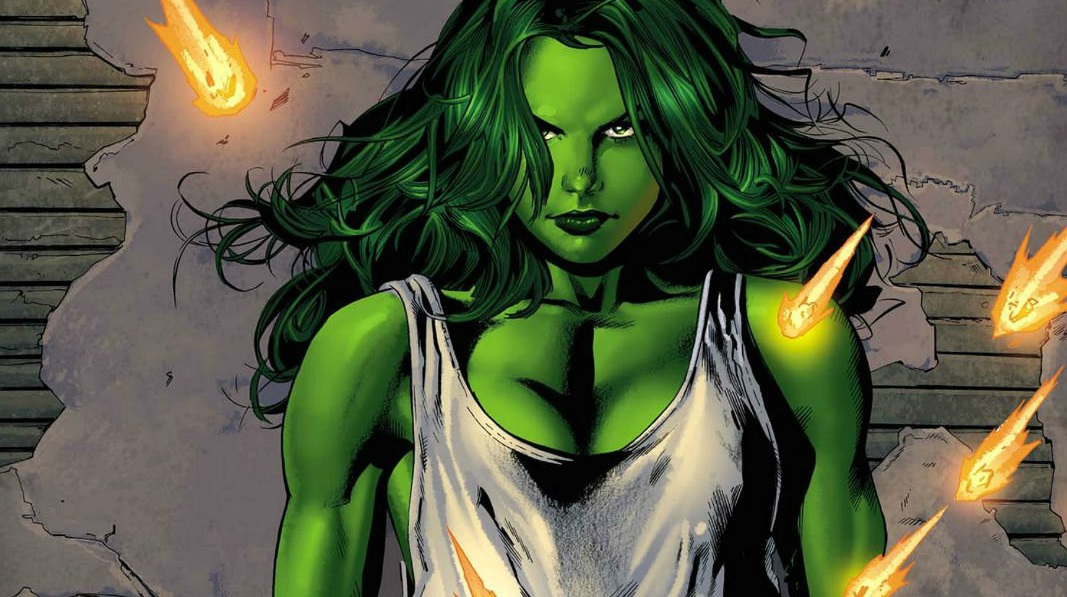She-Hulk is coming.
Now that Disney+ has cast Tatiana Maslany as their Jennifer Walters, it’s the perfect time to look back at the history of the powerful legacy character. I’m not talking about her comic book origins, though, but instead about her creation and the strange story behind it.

Marvel Comics
The early 1970s were a rough time for the comic book industry. Flagging sales meant that huge flagship titles like Spider-Man and Fantastic Four slipped into low numbers that hadn’t been seen since a decade before. Marvel took it as a sign to diversify their lines throughout the decade, introducing many new characters like Luke Cage, Shang-Chi, The Cat/Tigra, Hellcat, Ms. Marvel, Spider-Woman, and the legendary lineup of Giant-Size X-Men including Wolverine, Storm, Nightcrawler, Colossus, and more. But the true impetus for this was more often than not commercial instead of creative. For example, Marvel created Luke Cage to sell more comics to Black readers; The Cat to sell more comics to girls; and the cast of Giant-Size X-Men to sell more comics internationally.
Spider-Woman, while part of this trend, also had strong roots in a different commercial interest: intellectual property. Worried that a competing publisher might try to sell a female derivative of Marvel’s most famous character, Marvel Comics Publisher Stan Lee came up with a plan to park the Spider-Woman trademark with Spider-Woman #1 in 1977. Marvel created She-Hulk out of the same mentality during the height of The Incredible Hulk’s popularity on CBS three years later. This was shortly after the release of Universal’s The Bionic Woman, which was a spinoff from the hit show The Six Million Dollar Man. It gave the network sole ownership of their show rather than having to license it from Martin Caidin, the author of the original novel, Cyborg.
Understandably, Marvel Comics and Stan Lee worried that Universal—also producing The Incredible Hulk—might do the same thing to them, inspiring Stan The Man to protect that potential property too.
Universal
In Marvel Comics: The Untold Story by Sean Howe, original She-Hulk series writer David Anthony Kraft shares this telling anecdote about Jennifer Walters’ creation:
“It was done under duress. It was like ‘We need to create a character called She-Hulk, and we need to get it out in the next thirty seconds.'”
So that’s exactly what they did, with Lee and artist John Buscema behind the debut issue.
Though Stan Lee had a penchant for cynical business decisions, he was not the originator of this rights grab. In fact, Marvel wasn’t alone in looking to make sure that they owned the derivative gender-swapped versions of their most profitable characters. During the Batmania of the late ’60s, DC Comics’ Bat-editor Julie Schwartz co-created and published a new sidekick known as Batgirl so that no matter what, DC Comics would own the rights to the character who would soon be played by Yvonne Craig alongside Adam West and Burt Ward in the smash show.
Marvel Comics
Despite She-Hulk’s less than inspired origins, the character has become a staple of the Marvel Universe; but has ironically struggled to find her way to the screen since her media-minded creation in 1979. Universal didn’t license the character from Marvel after she appeared in Savage She-Hulk #1. A Jen Walters spinoff never materialized. In 1990, USA Today reported that a She-Hulk TV movie was about to enter production from ABC, but the special wasn’t ever actually made. Of course, now Disney owns both ABC and Marvel Comics, and will finally be creating a new series of their own based on this wonderful and weird moment in comics history.
Header Image: Marvel Comics